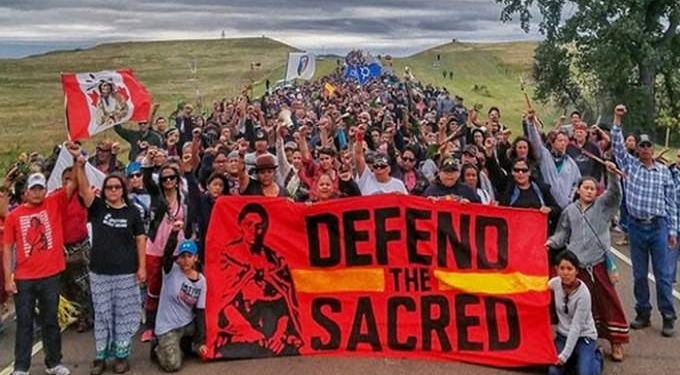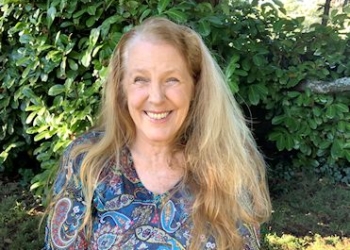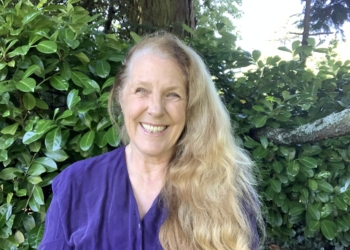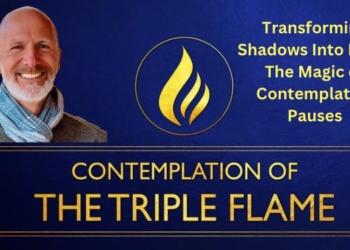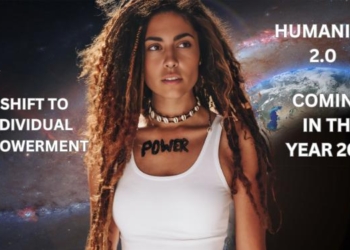
By Martin Winiecki | Uplift Connect
A True Light of Hope in the World
The non-violent resistance of Indigenous water protectors against the Dakota Access Pipeline at Standing Rock has inspired a movement of ‘sacred activism,’ rooting political action in spiritual reconnection. Sacred activism is a true light of hope in a world facing catastrophe, as it provides the spiritual foundation needed to unify people worldwide around a shared vision for global system change.
Leaving the Death Cult
Humanity is at the pinnacle of a historic death cult. Late last year, more than 15,000 scientists from 184 countries issued a dramatic ‘warning to humanity’ over biodiversity loss due to overconsumption of resources. They agreed that if we continue ‘business as usual,’ we’ll shortly approach a point where it will be too late to shift our apocalyptic trajectory; worldwide ecosystem collapse will be inevitable.
In its compulsion for unending growth, capitalism has developed a vampiric mechanism of planetary proportions, sucking the lifeblood out of the Earth’s body. In its addiction to mining, oil drilling, deforestation, the exploitation of billions of lives and the mental enslavement of humanity, today’s global economic system precisely embodies Wetiko, an Algonquin word for ‘cannibalism’ that illustrates the insanity we’ve fallen prey to. Wetiko is the psycho-spiritual ‘disease of the white man’ which makes amnesiacs of us–our natural sense of basic interdependence with other beings is obliterated and replaced with an addictive focus on personal short-term profit.
Through an insidious history of colonization, genocide, and imperialism, the Wetiko virus has gradually infected (nearly) all of humanity, brainwashing us into a mode of thought that proclaims that ‘the Earth is a dead exploitable resource,’ ‘animals and plants have no soul,’ ‘life is a game of competition and fight,’ ‘love always ends in disaster,’ ‘either we kill our enemies or they will kill us,’ ‘we will be punished for our mistakes’ and so on. Under the spell of this subconscious conditioning, we are sleepwalking towards an abyss, lacking the psychological and spiritual capacities needed to make sense of, and respond to, the crisis we’re facing. With our collective survival on the line, we need a wholly different vision of ourselves, and our relation to the living world, that’s able to awaken our primordial love for life and our desire to serve it without reservation. Only with a unifying narrative that addresses the human disconnection at the root of our global crisis will the many social, political and ecological movements converge into a relevant power for global system change.

The Seeds of Standing Rock
What is sacred? It might seem cynical to speak about something ‘sacred’ after millennia of unspeakable atrocities committed in its name. Yet, living in a civilization that has defiled virtually everything, emptied this world of meaning and processed it into commodities, our longing for the sacred might, after all, may be the crucial guide out of our dead end.
When about 30 members of the Standing Rock Sioux Tribe confronted the fossil fuel industry and the U.S. government; setting up a camp at their burial ground which was to be bulldozed for the construction of the Dakota Access Pipeline, they did so to ‘defend the sacred.’ Ladonna Bravebull Allard, founder of the Sacred Stone Camp affirms:
We stood up because we had no other choice. Water is life. If there’s no water, we will die.
Such ‘sacred activism’ comes as a deep re-membering: We are of this Earth. There is no salvation outside of it. Patriarchal religions told of some out-of-Earth entity making covenants with exceptional people and asking us to renounce this world. Yet the original covenant of all people is with the Earth and is therefore of an Earthly, sensual nature. Activism doesn’t become ‘sacred’ merely because it works ‘on behalf of’ something sacred; but by recognizing, honoring, embodying and celebrating the inherent sacredness of all that lives–which isn’t anywhere beyond this world, but right here. Sacred activism challenges us to make a choice at every moment, to decide for life, for solidarity and for trust, despite the temptation of an overwhelming field of fear, greed and hatred. It was this clear orientation that fueled the resistance at Standing Rock–and drew in people from all directions to join it. Representatives of over 300 Indigenous cultures, black bloc anarchists, environmentalists, spiritual seekers and over 2,500 army veterans banded together, beyond their usual ideological divisions, because they were united by something more fundamental than ideologies–a shared spiritual center.

Standing Rock inspired similar resistances globally. Chief Arvol Looking Horse, spiritual leader of the Lakota, Dakota and Nakota People, writes in February 2018:
People all over the world are now beginning to understand that [water] is a living spirit: it can heal when you pray with it and die if you do not respect it. (…) Standing Rock has marked the beginning of an international movement that will continue to work peacefully, purposefully, and tirelessly for the protection of water along all areas of poisonous oil pipelines and across all of Mother Earth.
Around the world, movements are arising towards decentralizing power, culture and economies, leaving the mega-systems of nation states and globalized corporations behind and building a society based on autonomous regions in which people can reclaim their sovereignty while caring for each other and the Earth again. There are remarkable movements in the Global South, such as the Indigenous Zapatista movement in Mexico, the Rojava revolution in the Kurdish zones of northern Syria, the Landless Workers Movement in Brazil, peace communities, such as San José de Apartadó in Colombia and many more. In the Global North, we see a revival of socialist ideals and the emergence of municipalism.



